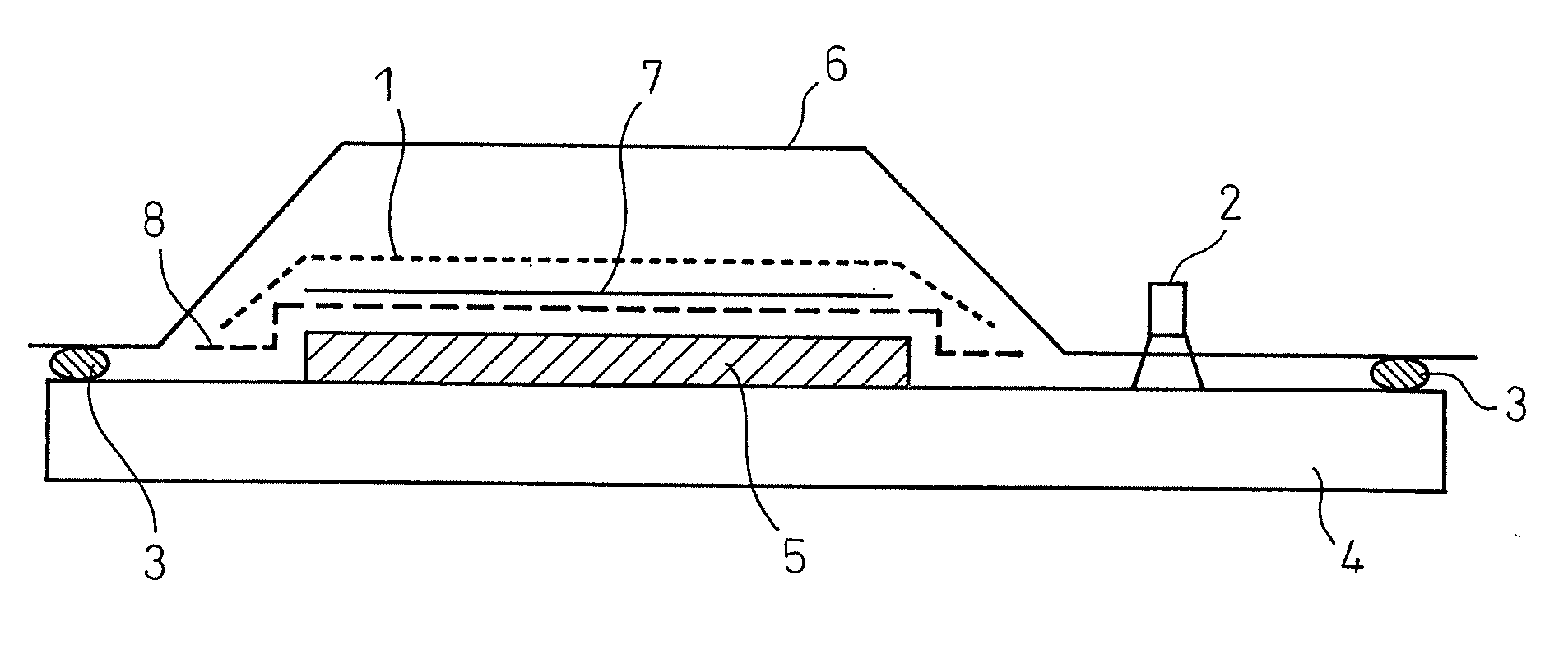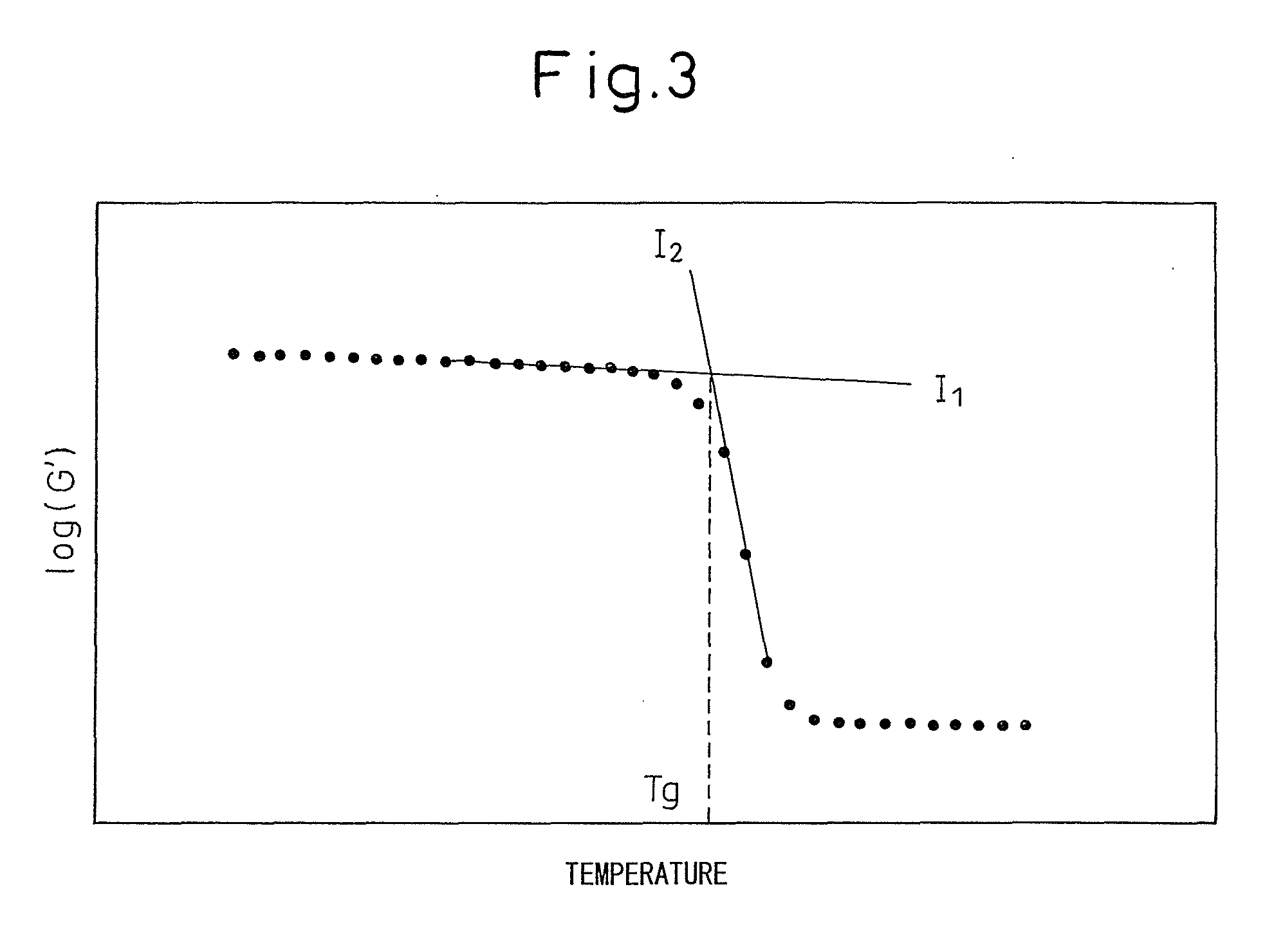Fiber-reinforced composite material
a composite material and fiber reinforcement technology, applied in the field of fiber reinforcement composite materials, can solve the problems of inability to produce difficulty in newly acquired autoclave equipment, and inability to manufacture larger molded articles in practice, and achieve excellent physical properties. , the effect of excellent outer appearan
- Summary
- Abstract
- Description
- Claims
- Application Information
AI Technical Summary
Benefits of technology
Problems solved by technology
Method used
Image
Examples
example 1
[0059]A TRK510 material by Mitsubishi Rayon Co., Ltd. was prepared as the fiber base material. With the basis weight of the resin film set for a resin content of 45 mass % in the prepreg, resin composition A was coated onto a release sheet with a film coater under 60° C. conditions, to obtain a resin film. The obtained resin film was attached onto both sides of the fiber base material, and passed through a fusing press (JR-600S, product of Asahi Corp., processing length: 1340 mm, pressure: cylinder pressure) under conditions with a temperature of 40° C., a pressure of 0.05 MPa and a feed rate of 1.6 m / min, to obtain prepreg 1. The resin content of the prepreg was 45 mass %. Upon cutting the obtained prepreg and visually observing the cross-section, interior sections without impregnation of the resin were seen. The obtained prepreg was laminated along the warp yarn direction, and the laminated body was bagged with the construction shown in FIG. 1. Also, a vacuum pump was connected to...
example 2
[0074]A sample was cut out from the cured resin sheet of resin composition A obtained in the same manner as Example 1, and the Tg was measured by DSC. The results are shown in Table 3.
example 3
[0075]Resin composition D was obtained by mixing jER828 and DY9577 at room temperature in the composition shown in Table 3. The obtained resin composition was placed in an aluminum dish and subjected to heat curing in an oven at 150° C. for 2 hours to obtain a cured resin. A sample was cut out from the obtained cured resin, and the Tg was measured by DSC. The results are shown in Table 3.
PUM
| Property | Measurement | Unit |
|---|---|---|
| Temperature | aaaaa | aaaaa |
| Temperature | aaaaa | aaaaa |
| Temperature | aaaaa | aaaaa |
Abstract
Description
Claims
Application Information
 Login to View More
Login to View More - R&D
- Intellectual Property
- Life Sciences
- Materials
- Tech Scout
- Unparalleled Data Quality
- Higher Quality Content
- 60% Fewer Hallucinations
Browse by: Latest US Patents, China's latest patents, Technical Efficacy Thesaurus, Application Domain, Technology Topic, Popular Technical Reports.
© 2025 PatSnap. All rights reserved.Legal|Privacy policy|Modern Slavery Act Transparency Statement|Sitemap|About US| Contact US: help@patsnap.com



